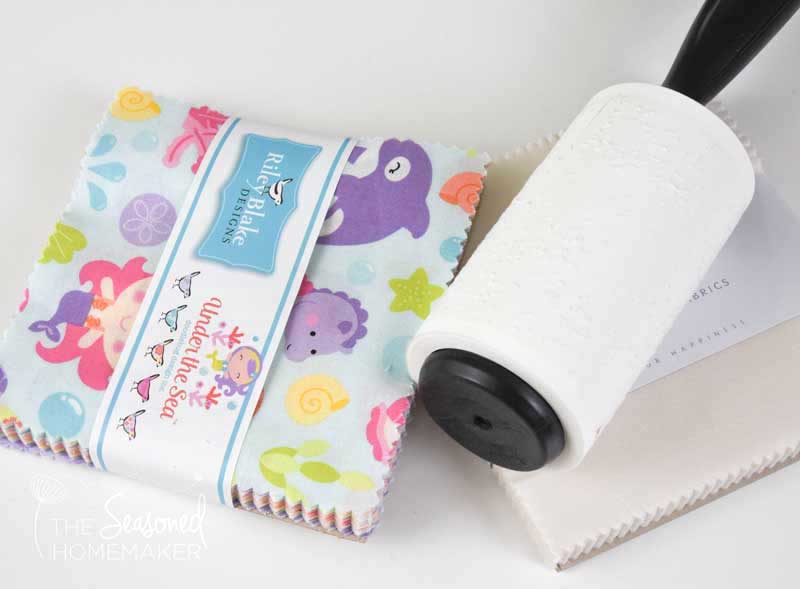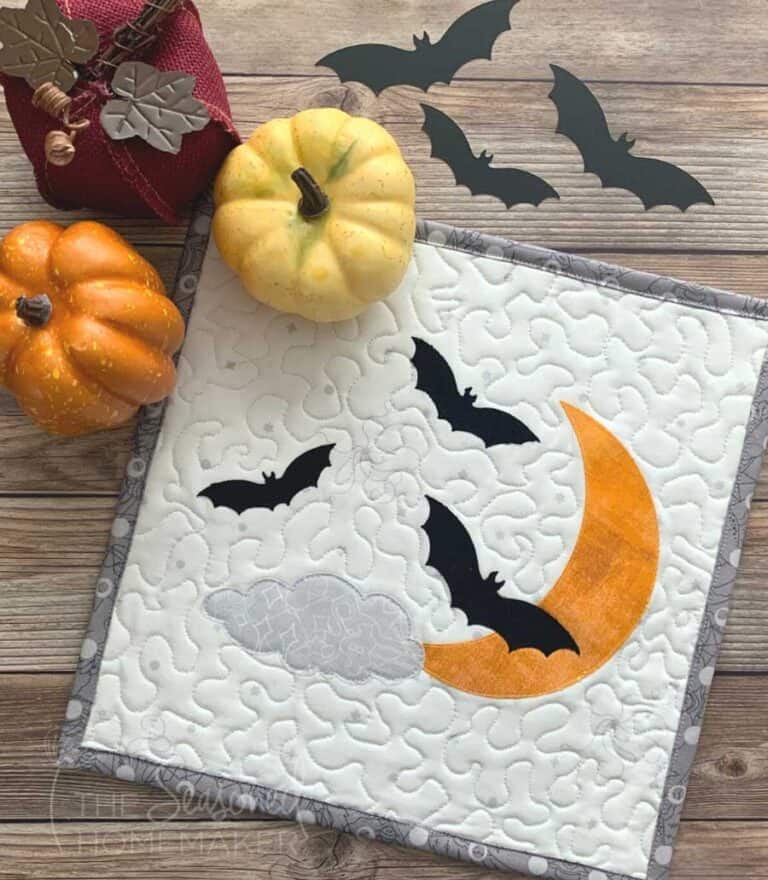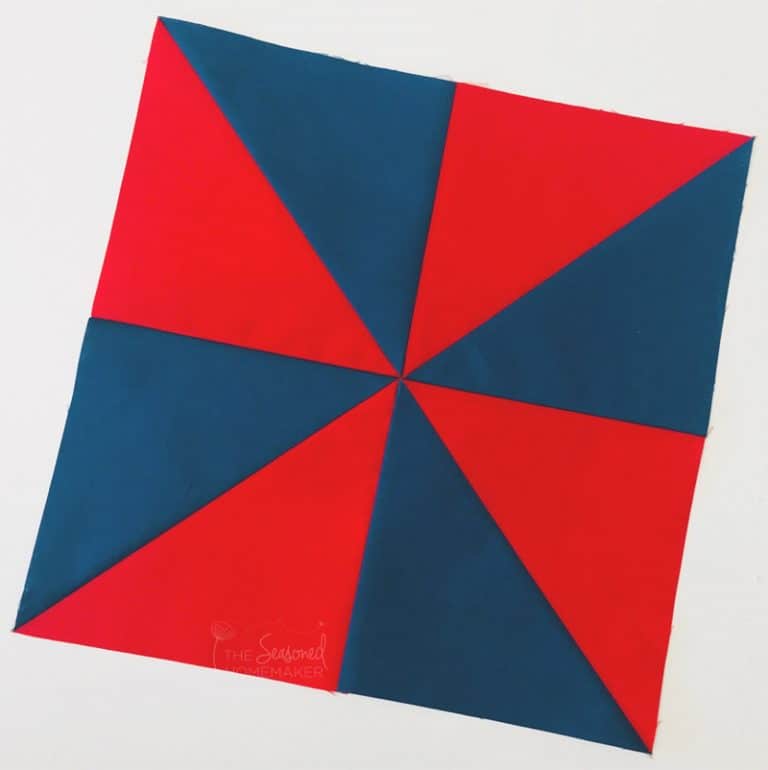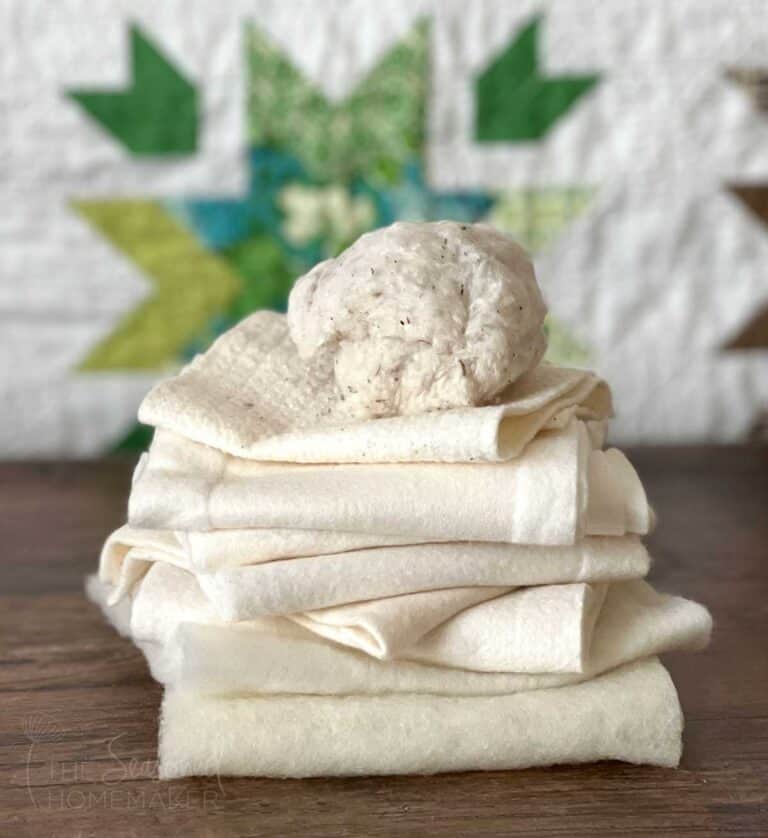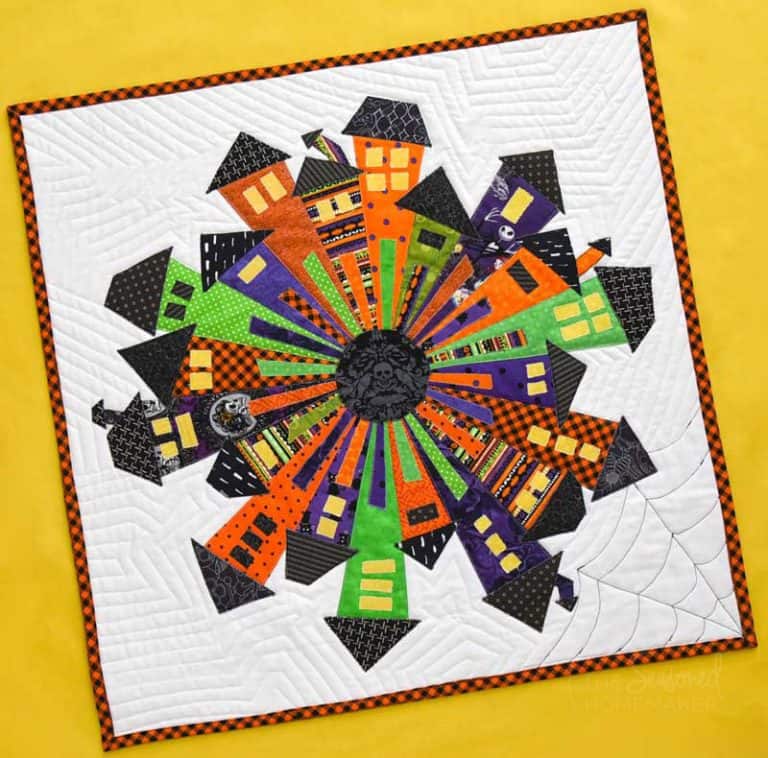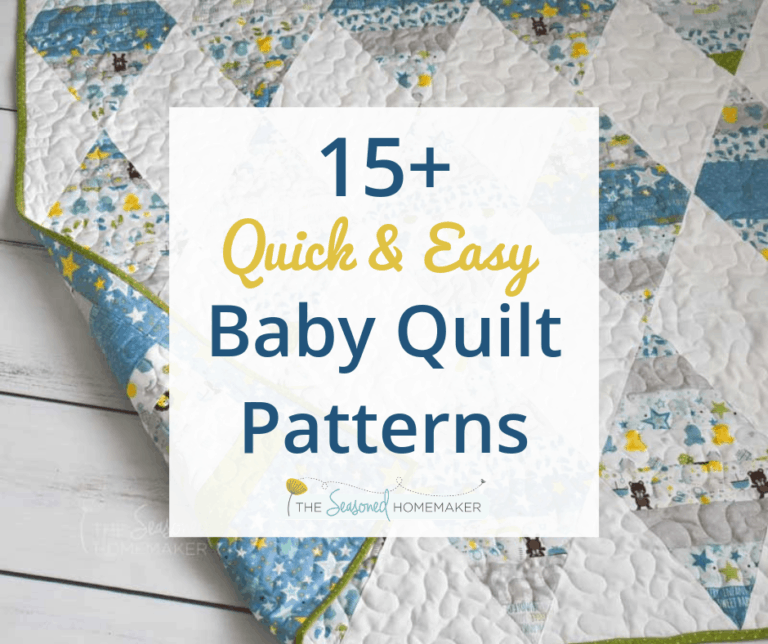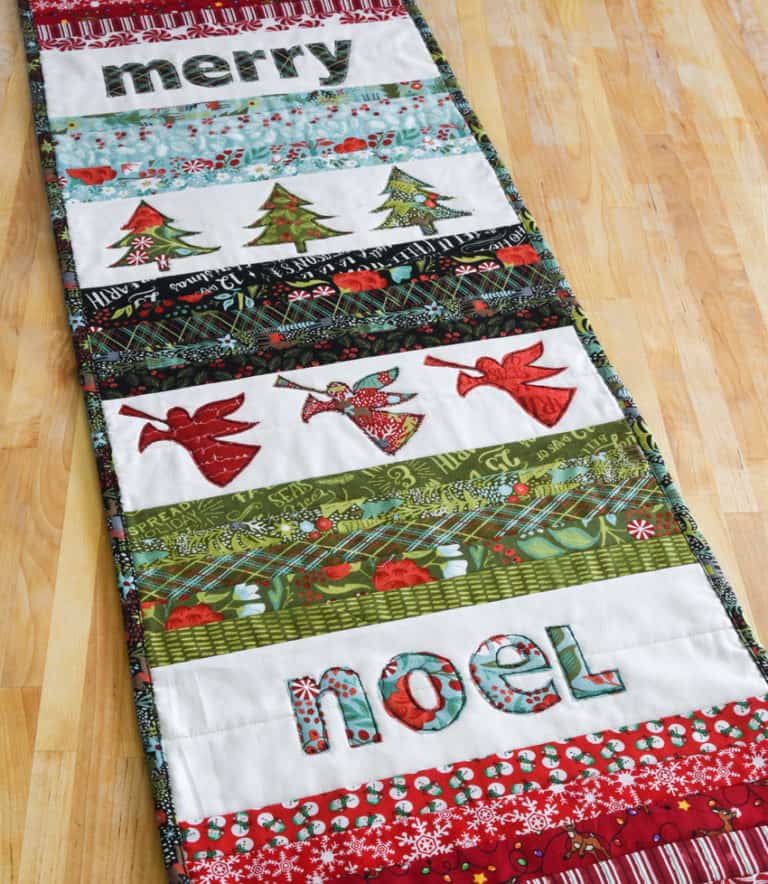The Ultimate Beginner’s Baby Quilt Tutorial
This post may contain affiliate links which won’t change your price but will share a commission.
Inside: The Ultimate Beginner’s Baby Quilt Tutorial
Making a baby quilt is easier than you think when using 5″ squares from a couple of pre-cut charm packs. Since there is no cutting involved, your project can be completely pieced in very little time.
It is the easiest way for a beginner to make a quilt and also a fast way for a seasoned quilter to whip one up in an afternoon.
And, you can make your own charm packs by cutting down leftover fabrics from previous projects into 5″ squares making it a total quilting win-win.
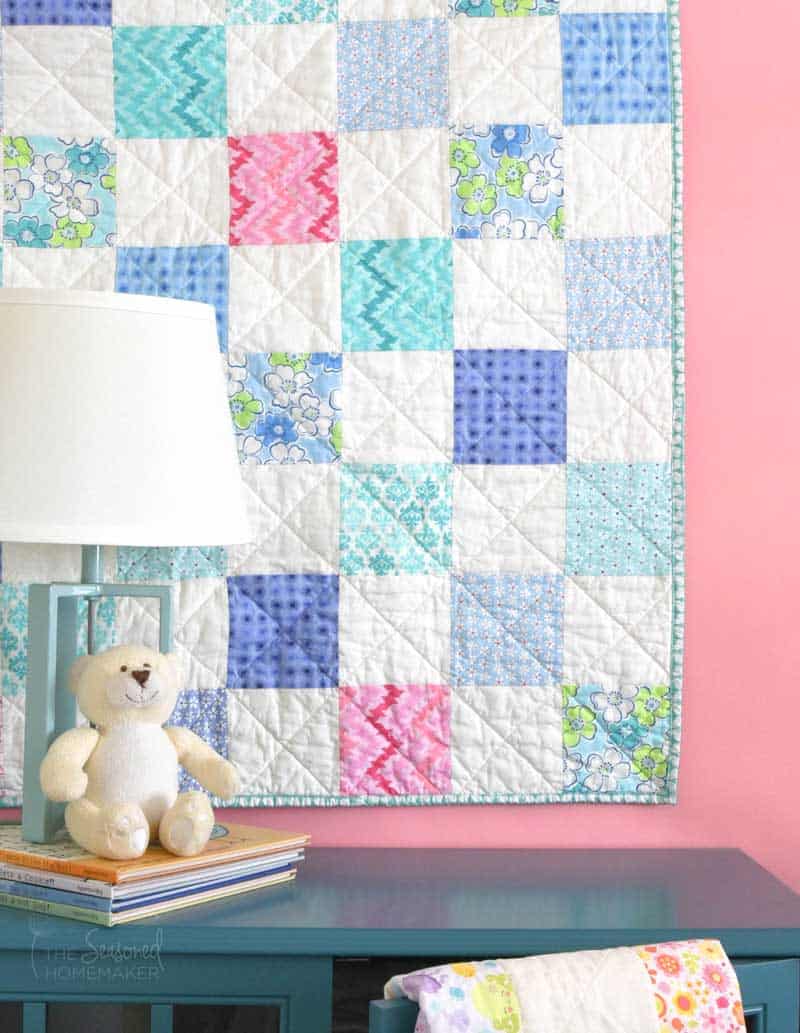
Want an ad-free, printable copy of this tutorial? Scroll to the bottom of this post for more details!
The Ultimate Beginner’s Baby Quilt Tutorial
The Secret is Charm Packs
To simplify this quilt, you will be using charm packs. If you’re unfamiliar with charm packs they are a sampling of a fabric collection that is assembled by fabric manufacturers.
Within the collection, these fabrics are color-coordinated and will likely have a large print, a medium print, a small print, maybe something geometric, possibly something strip-y, and something with a small design. Most charm packs will have forty to forty-one 5″ squares.
The second type of pre-cut charm pack you will be using is a set of solids – preferably in a light color. This charm pack will contain 5” pre-cuts of the same fabric and will be uniform throughout the entire quilt.
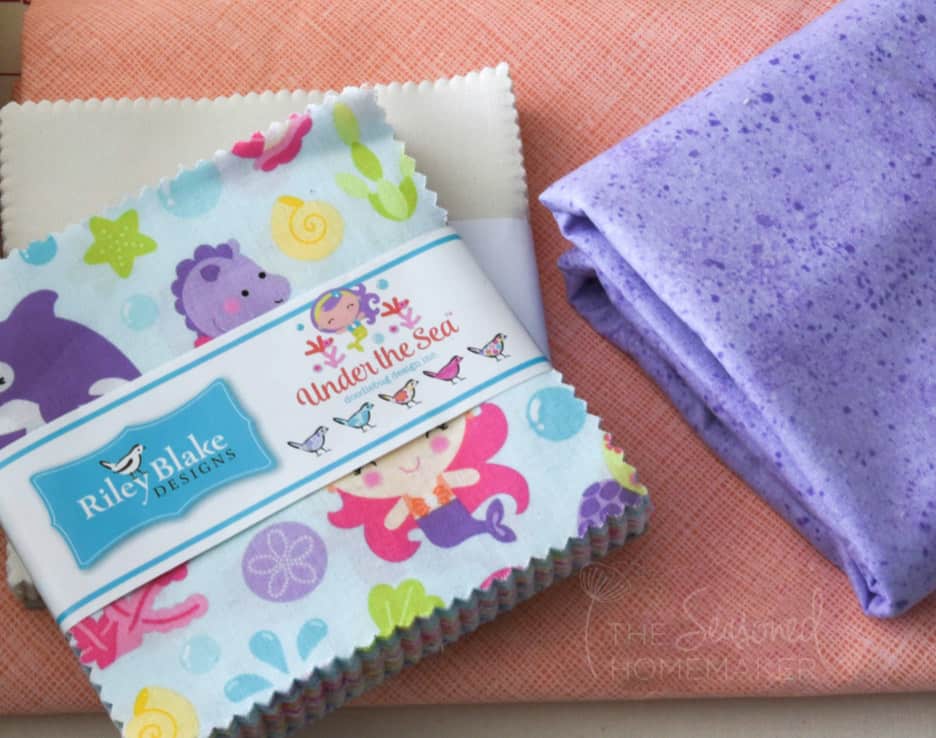
Pro Tip: I recommend Fat Quarter Shop for charm packs.
- Choosing the fabrics for your quilt is a matter of personal taste. For this project you are free to choose whatever printed fabrics you love. I recommend you choose a Print Charm Pack that will contrast with your Solid Charm Pack. This will make the design stand out a little better and add interest to your quilt.
- This quilt uses 41 charm squares from the Printed Fabric and 40 charm squares from the Solid Fabric. That means the quilt top consists of (81) 5” squares. Once they are sewn together your quilt top should measure 40.5” x 40.5” – which is perfect for a baby crib.
- Most charm packs contain 42 charm squares. Make sure the charm pack you choose has at least 42 charm squares. Some manufacturers have started making smaller charm packs with only 15-20 squares.
- Before tearing into your charm pack you may want to take a minute and roll over the edges with a sticky lint roller. When the charm packs are cut during the manufacturing process, there is a lot of lint left behind. Using a sticky lint roller helps eliminate some of the lint from invading your sewing area and clinging to your clothing.
- Many charm packs will be sorted in order from large prints to small prints or dark prints to light prints, etc. It is a good idea to go through the Print Charm Pack and sort the designs. You want to evenly distribute the fabrics so you don’t end up with all of your large prints on one side of your quilt and all of your tiny prints down in the corner. Be sure to pay attention to the color value which is how light or dark the fabric appears.
Gather Materials & Supplies
Materials
- (1) 5″ Charm Pack with 42 charm squares in a coordinating print fabric
- (1) 5″ Charm Pack with 42 charm squares in a coordinating solid fabric
- 2-1/2 yards of quilting weight 100% cotton fabric for the quilt back. I recommend choosing a print fabric, not a solid.
- 1/2 yard coordinating fabric for quilt binding
- 1 Package of Crib Batting – 45” x 60” Note: 1 pkg. of twin bed batting will make 2 baby quilts and can double as a design wall
Supplies
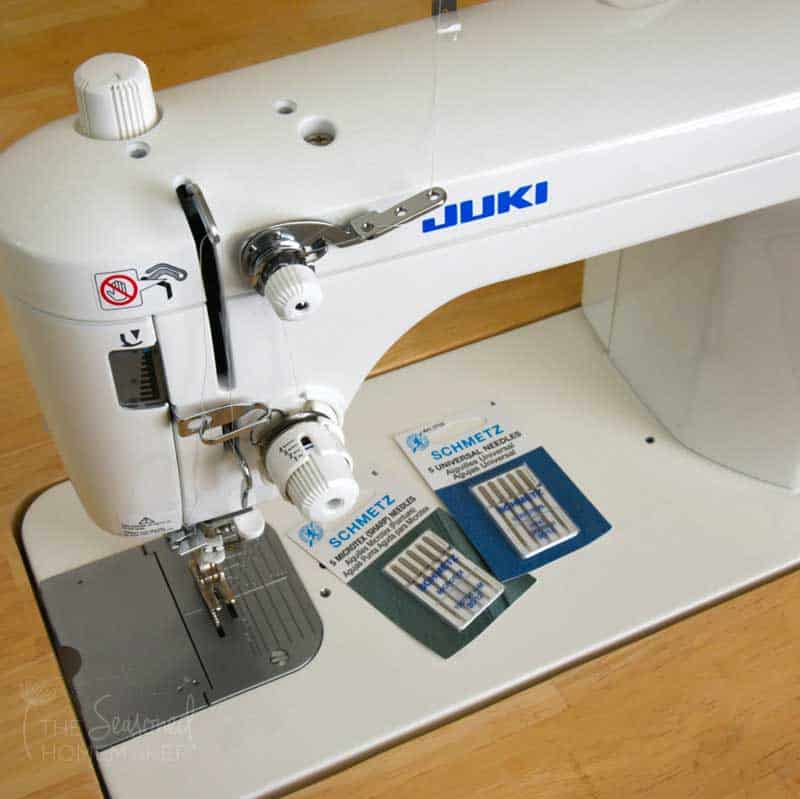
- Sewing Machine
- 80/12 Schmetz Needles for piecing
- 90/14 Schmetz Needles for quilting
- Straight Pins
- Wonder Clips
- #2 Basting Pins (Large 1.5” )
- 1/4” Piecing Foot
- Walking Foot
- Seam Ripper
- Water Erasable Fabric Pen
- Self-Healing Cutting Mat
- Rotary Cutter
- Acrylic Ruler
- Scissors
- 50 wt. Sewing Thread in Neutral Color
- Iron and Ironing Surface
- Spray Starch
Step 1: Layout Your Design
It’s time to layout your quilt. Find a large enough space that you can layout and move around the charm squares until you get the right look. (table, floor, bed, etc.) You will be working with both print and solid charm squares.
When laying out, be sure to alternate print and solid fabric squares with nine squares across and nine squares down. Note: Be sure to pay attention to the different color values in the printed squares. Make sure that the different color values are evenly spread around your quilt top.
- Row 1: Start in the top left corner and place the first printed fabric square here. Add the next eight squares on this row, alternating print and solid fabric squares.
- Row 2: Start in the top left corner and place the first solid fabric square here. Add the next eight squares on this row, alternating print and solid fabric squares.
- Repeat Rows 1 and 2 until all nine rows are complete.
Pro Tip: Use your batting for a design wall. Just tape it to a wall and then layout your charm squares onto the batting to see the placement clearly.
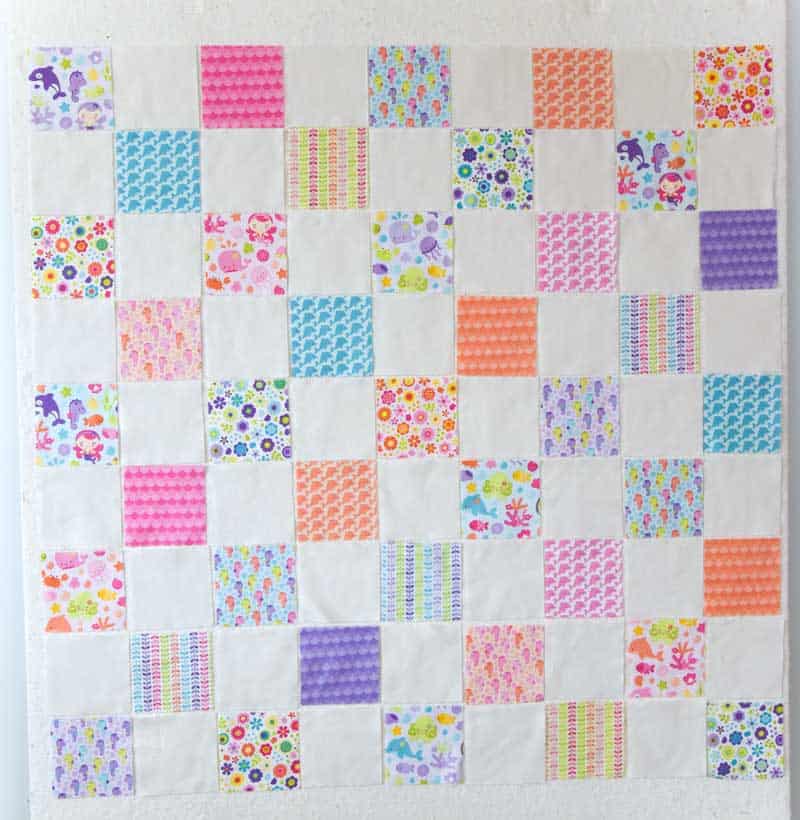
Step 2: Snap a Picture with Your Phone
Take a photo of your quilt layout. You will be able to see where you might need to adjust charm square placements AND this will help you remember where everything needs to go once you start sewing.
One way to see color value is to make the photo black and white. This will make the differences in color value stand out.
Keep snapping pictures and making adjustments until you get the desired look for your quilt top.
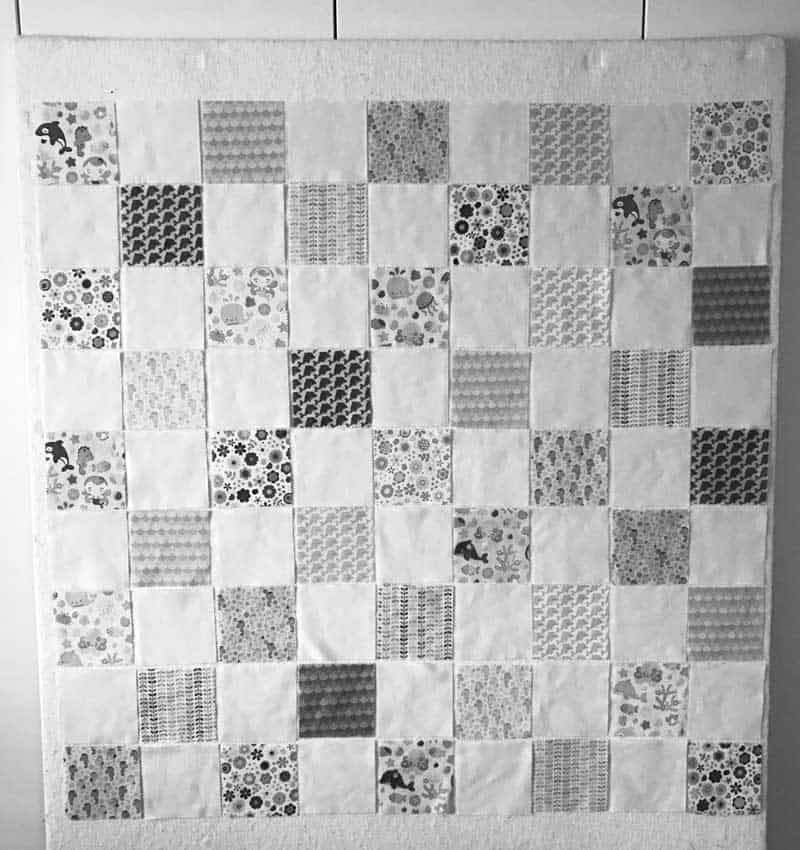
Step 3: Piecing the Quilt
Seam Allowance Accuracy
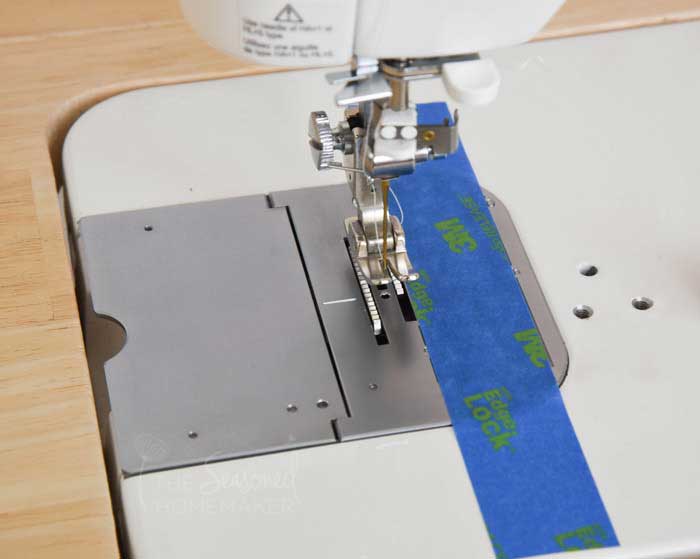
Before getting started, I lets talk about seam allowance accuracy. Seam accuracy is a quilting skill that needs to be embraced from the beginning.
If each of your seams are off by as little as 1/32” it will adjust the overall size of your quilt. If your seams aren’t consistent and are off by varying amounts such as 1/8”, 1/16”, or even 1/32” you will have difficulty when you start connecting the blocks.
There is good news because an accurate 1/4″ seam allowance isn’t difficult to achieve. Piece with a 1/4″ foot and/or a piece of painter’s tape to get those accurate seam allowances.
Read more about achieving a perfect seam allowance in my post: How to Sew the Perfect Quilting Seam Allowance.
Organize Charm Squares for Sewing
There are several ways to piece a quilt. However, we are going to use the 9-patch method. I chose this particular method so you could learn how to create a 9-patch quilt block then connect it into pieced rows.
Using 9-patch blocks will allow you to see how individual blocks are constructed, which is typical when making most quilts. Note: Once you master the 9-patch block, you’ll be equipped to make any size quilt out of any fabric!
You will need an orderly way to gather up your charm squares and then correctly place them at the sewing machine. It’s so easy to get lost in this – so working with three charm squares at a time will help you set up your own system for keeping your design organized.
One way I like to do this is to stack the three charms that will form a row from left to right. Doing this helps me see the placement of the squares.
Making 9-Patch Blocks
Set your stitch length to 2.0mm. Having a smaller stitch length means you don’t have to backstitch at the start of each seam.
With RIGHT sides together place the lighter block on top of the darker block. Pin together at top and bottom.
Align the right edge of the pieces with your 1/4” foot or the tape you’ve placed onto your sewing machine.
Pro Tip: The pinked or “sawtooth” edge is where you line up your 1/4” foot. That is the outside edge.
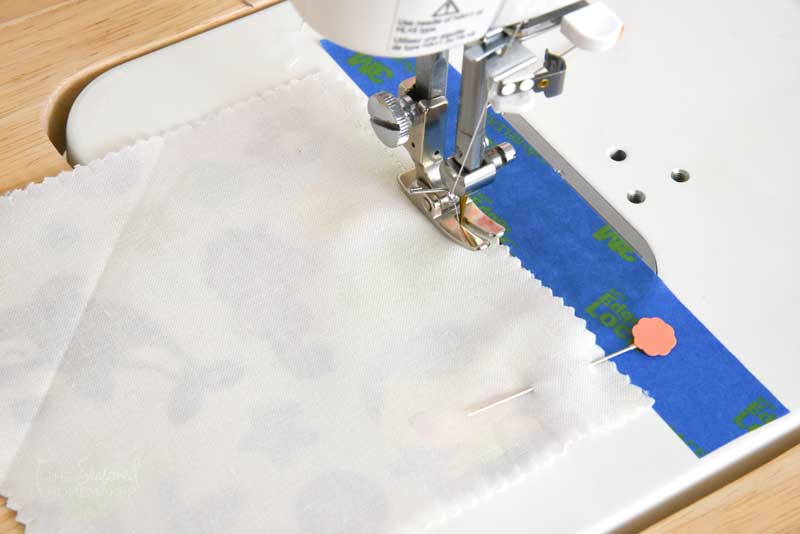
Begin stitching down the right side using a 1/4” seam allowance. The feed dogs will pull your fabric through. Remove pins BEFORE you sew over them. Let the fabric feed through the machine.

Once three individual blocks are attached across they will create a strip. The nine-patch grid works best when it is done in an alternating grid. The first row should be Dark Square + Light Square + Dark Square.
The second row should be Light Square + Dark Square + Light Square. The third row should repeat the first.
Once you’ve created your three alternating rows, it’s time to press.
Pressing the Seams
The way you press your seams matters! You don’t want to over-iron the seams because it will stretch out the fabric and alter the size of your block. Instead, you want to press down on them.
Because you’re using a print fabric and a light solid fabric, it’s always best to press the seams towards the darker fabric when possible, or in this case the printed fabric. This is called Pressing to the Dark Side.
You DO NOT want to press the seams open. That will weaken the quilt’s seams and they could later come open. Always press seams in one direction – preferably towards the darker fabric.
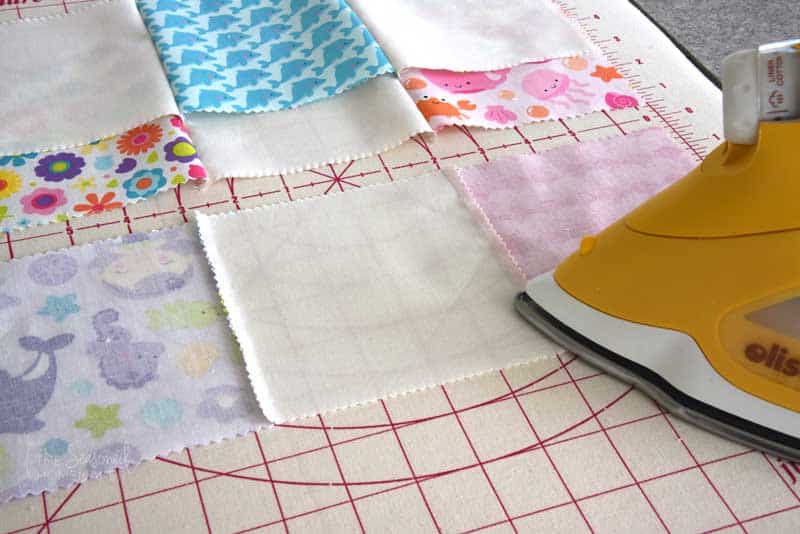
Alternate the pressing direction on each row by pressing Row 1 seams to the right, Row 2 seams to the left, Row 3 seams to the right.
When you alternate the seam direction it reduces seam bulk when stitching the rows together. Press from the back of the quilt blocks – pressing the seam towards the darker fabric when possible.
Lightly spritz with spray starch on the front and give each row one final press then place them back in order on the design wall or other layout space.
Step 4: Making a 9-Patch Block
Nesting Seams
Before you can connect the rows you need to understand about nesting seams. Because we pressed ‘to the dark side’ your seams will alternate and ‘nest’ when you pin the rows together. This is ideal because it creates less bulk in the quilt.
Pin the top row to the second row, matching the nesting seams. Pin at the seams. Pin at the starting point, center of each block, and at the end.
Pro Tip: There is a natural shifting of the layers when you stitch across intersections. It is important that your intersections are pointing towards the needle, on the top, as it approaches the machine. You will have a better lock on the seams. It’s natural to think that stitching over seams pointing away from the machine is easier. That’s false, the layers can shift and the matched seems will be off.
Slowly stitch across, make sure to remove pins as you stitch.
Pin the third row to the second row in the same manner and stitch.
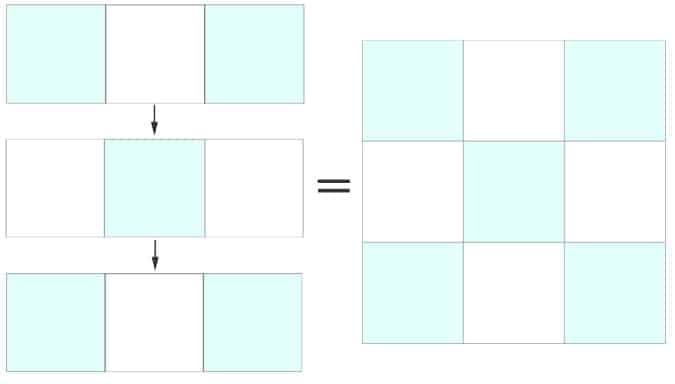
Press the Connecting Rows
To keep this process fast and easy, I recommend you press your connecting rows in an alternating way. That means, on the first block press up, the second block press down, the third block press up. Alternate when attaching Rows 2 and 3.
Congratulations! You now have ONE completed block. You will need to sew 8 more. Be sure to sew accurate 1/4” seams. This will insure your blocks go together correctly.
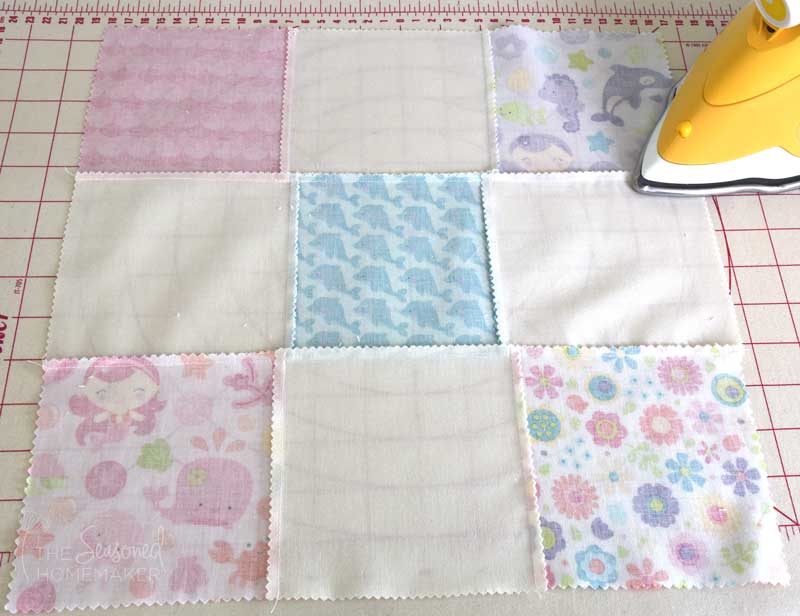
Step 4: Connecting Blocks into Rows
You now have nine same-sized blocks laid out and ready to connect into rows. Each row will consist of 3 blocks. You will be attaching the three blocks to create rows.
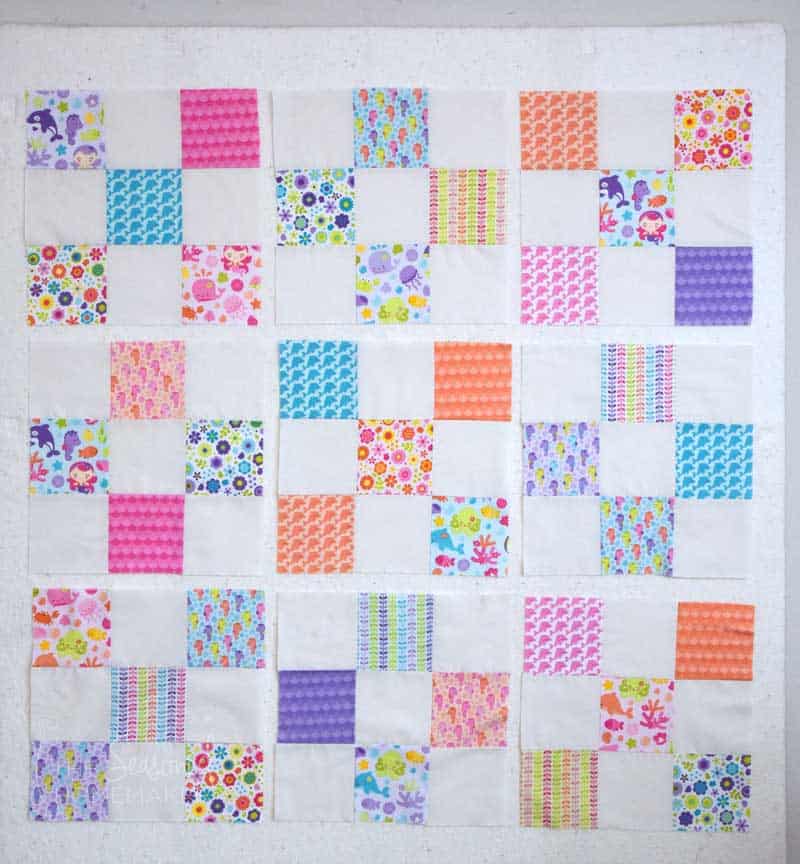
First Row:
- Lay Block 1 and Block 2 RIGHT sides together, matching up the nested seams. The seams should nest perfectly because you have alternately pressed each block, they should easily form nesting seams. If not, re-press them correctly.
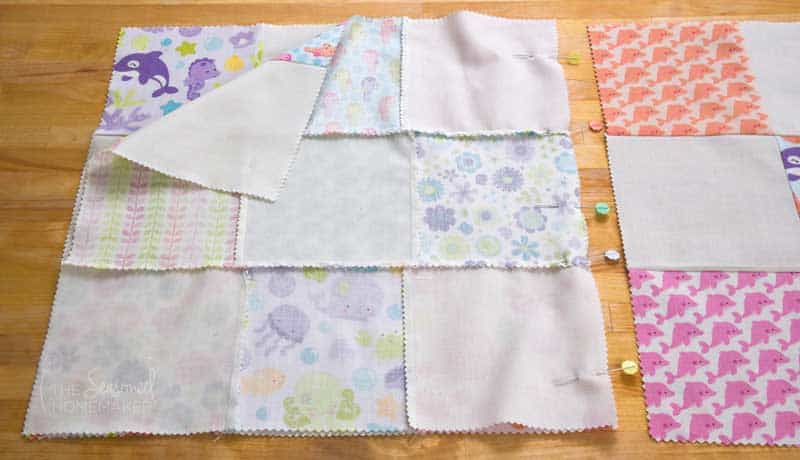
- Sew together using a 1/4” seam allowance. DO NOT PRESS yet!
- Add Block 3 to the above, carefully pinning at intersections. Stitch using a 1/4” seam allowance. You have now created your first row.
- Press the seams in one direction. For instance, Press Row 1 towards the left.
- Continue in this manner creating Row 2 and Row 3. Press these intersections in alternating directions. Row 2 towards the right, Row 3 towards the left.
Step 5: Creating the Quilt Top
This is where the quilt top comes together. When you connect the three rows you will have created a finished quilt top.
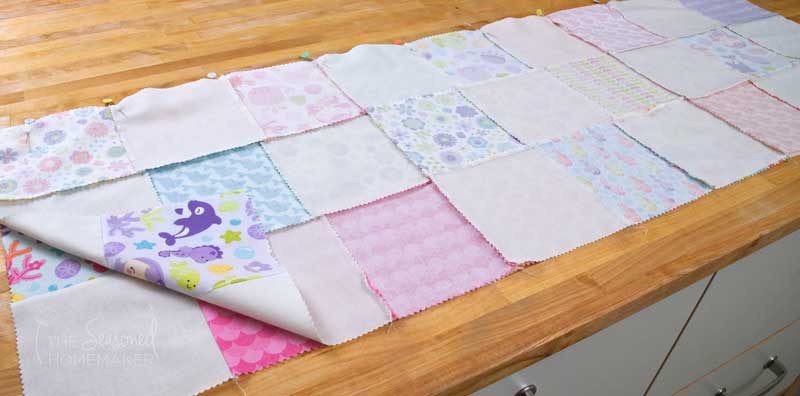
- Pin Row 1 to Row 2, matching up all of the intersections. If you’ve pressed carefully, all of your seams should create nesting seams.
- Be sure to check for any open seams and repair, if necessary.
- Using a 1/4” seam allowance, stitch the two rows together paying special attention to each intersection.
- If you get one or two intersections off a little, just unstitch a little on either side, line them up properly, and re-stitch.
- Pin Row 3 the the above and stitch in the same manner, carefully watching as you sew over intersections.
- Press the top row up and the bottom row down.
- Fold the quilt top into quarters and press in a crease. (This will be used later in Step 8.)
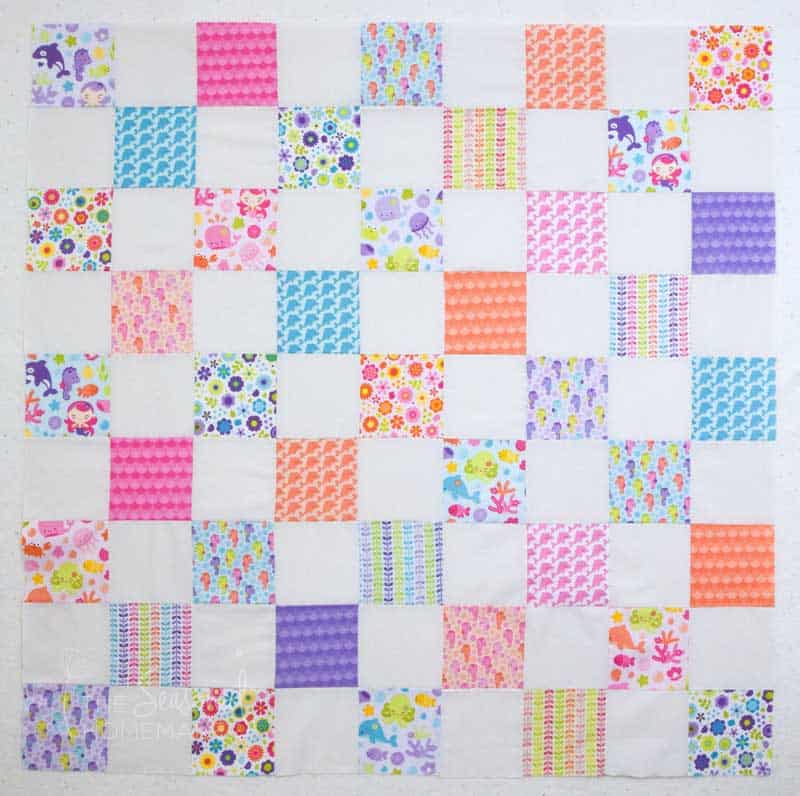
Step 6: Preparing the Quilt Back
- Quilt Backing fabric should be, from selvage to selvage, 44” wide. It’s best to choose a non-directional fabric for your first few quilts. Things like stripes can be difficult to match. Note: It may be necessary to add a piece to the side to make it wide enough for quilting.
- Cut off the selvages.
- Cut fabric to be 44” wide x 45” long. Ideally, your fabric should be 3-4” wider around each of the sides of your quilt top. Note: Bigger is not better. If you cut your backing too long or wide it could get caught in the quilting and require removing stitches.
- Press Quilt Backing fabric.
- Fold in half, from selvage to selvage, and press in a crease.
- Fold in half again to create quarters, and press in a crease. Set aside.
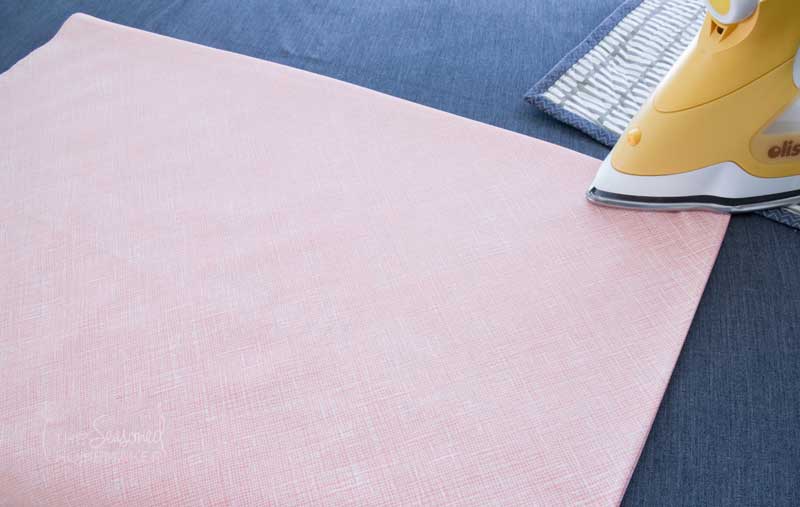
Step 7: Preparing the Batting
- Crib size batting is 45” x 60” wide. Cut the length to 45”. You’ll now have a piece of batting that is 45” x 45”.
Batting Tip: There is a right and wrong side to batting. The side with the “dimples” is the right side and it should face the wrong side of the quilt top. If you’re using Warm & Natural batting, the side that doesn’t appear “dirty” is the right side and it should face the wrong side of the quilt top.
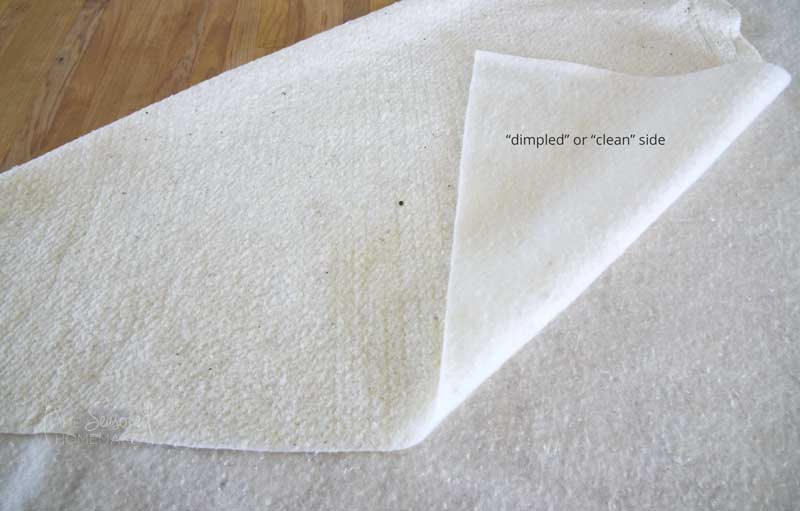
- Fold in half then fold in half again creating quarters. Note: Do not press the batting. If it has a polyester (and most do) it could melt under the heat of an iron.
- Find the center point and mark with a pin or water erasable pen.
Step 8: Preparing to Quilt
Make a Quilt Sandwich
- Using a flat surface such as a table or the floor, find the center point and tape a large button in place with painter’s tape. This will be your center mark for laying out the quilt.
- Layout the Quilt Back with the RIGHT side DOWN. Unfold from the center point and smooth.
- Using either clamps or tape, secure the Quilt Back to the flat surface. The fabric should be tight but not taut.
- In the same manner, layout the batting. Remember to face the “dimpled” side towards the Quilt Top.
- Smooth out any wrinkles and clamp or tape to hold both the Quilt Back and batting. The batting should be even with the Quilt Backing, trim any excess.
- Find the center button and layout the Quilt Top RIGHT side facing up.
- Smooth out any wrinkles and either tape or clamp. Smooth as you go. Be sure the entire quilt sandwich is tight, not taut. Work your hands across to feel for wrinkles. Smooth from the center out towards the corners.
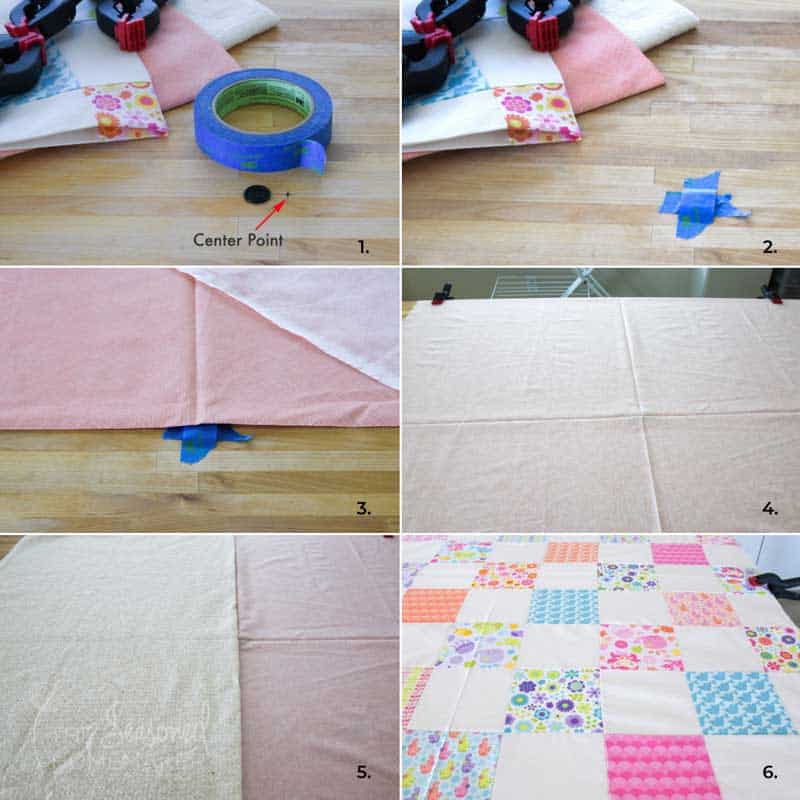
Pro Tip: There’s a faster, easier way to baste a quilt. Watch this short video below to learn how.
Pin Basting the Quilt Sandwich
- You will need to secure the three layers in order to quilt them. This is called Basting. One of the simplest and most inexpensive ways to do this is with Quilt Basting Safety Pins.
- Since the quilt is already laid out, you can start pin basting.
- When pinning quilt layers together you want to be careful in order to avoid having the backing shift or get loose when quilting. Check for lumps and bumps as you are pin basting. Continue smoothing as you pin.
- Start pinning from the center, and smooth as you go. To avoid having to continually unpin as you quilt, add basting pins to each of the quilt squares in the top right corner. Note: If all you have is 75 basting pins, you will need to adjust somewhere.
- Once the quilt is pin basted, you can remove tape and/or clamps.
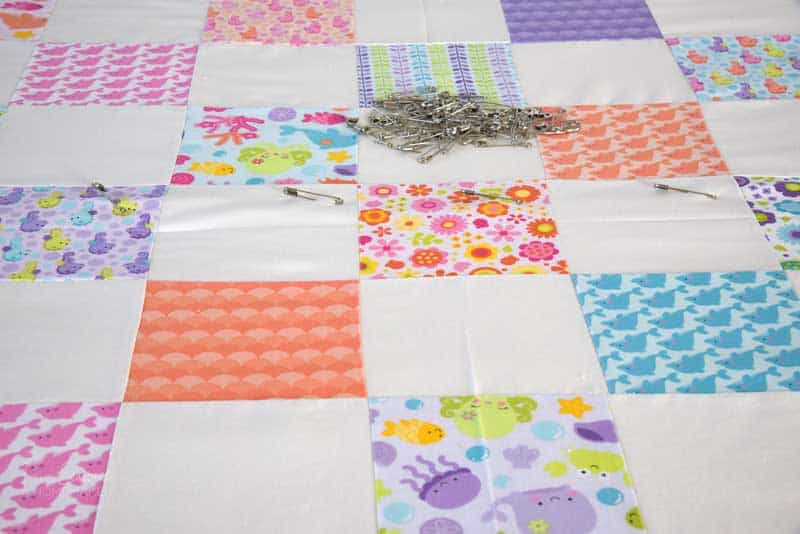
Mark the Quilting Lines
- Using a water erasable fabric pen, mark your quilting lines diagonally, from corner to corner, in both directions. Don’t be in a hurry – these are your quilting guidelines and need to be accurate for you to follow.
- Another option for marking quilting lines is to use blue painter’s tape on the right edge. Either of these options works well for getting straight stitches.
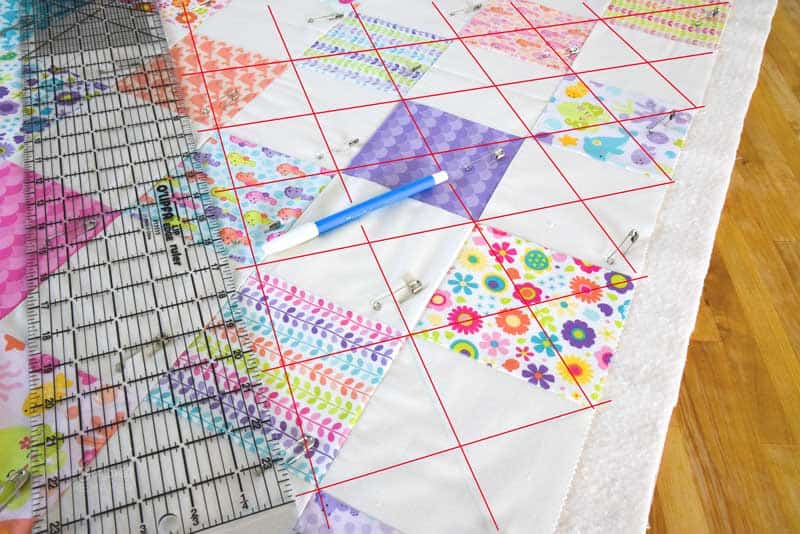
Step 9: The Quilting Process
Quilting
Pro Tip: Use a Walking Foot if you have one available.
- Before you begin quilting, be sure your chair and sewing surface are at a good height for you sewing machine. You don’t want to be reaching up or slumping over.
- Some people like to use Quilting Gloves. They aren’t necessary for this project, but feel free to use them if you have them. They will help you have a good grip on your quilt.
- Set your stitch length to 3mm.
- Begin Edge to Edge quilting in the top left corner and stitch down your marking lines slowly and carefully. Back stitch in the batting at the beginning and end of each quilting row.
- If you’ve pinned correctly, you won’t have to remove very many pins as you are stitching.
- Continue stitching from corner to corner in the blocks. Do one row of stitching at a time.
- Turn the quilt, and complete the next row.
- The blue markings will show up really well in the white fabric, but may be a little hidden on your printed fabric. If you go slowly, you shouldn’t have a problem with this. You can always add a piece of painter’s tape to squares that don’t have visible marking lines.
- Take your time, do one or two rows at a time, take a break, then come back to it.
- One thing to watch out for is intersections. This is where you’re likely to create a bump. If you’re going slowly you can see these forming. Simply, stop, re-adjust your hands and the fabric. No more bump!
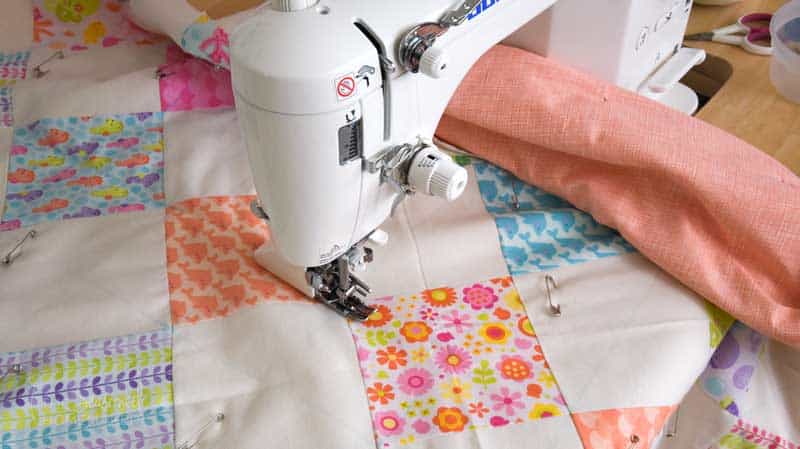
Squaring the Quilt
>>>Click here for a thorough tutorial on Square Up A Quilt
- Once you’ve finished the quilting you will need to trim off the excess backing and batting. This is called squaring the quilt.
- With your acrylic ruler, line up against a straight seam and trim off the excess. Do this on all four sides of the quilt.
- Take your time, you don’t want to trim down the quilt too much.
- Once you’ve finished squaring the quilt, take a water-filled spray bottle and mist the quilt to remove the blue marks. Let it air dry completely before going on to the next step.
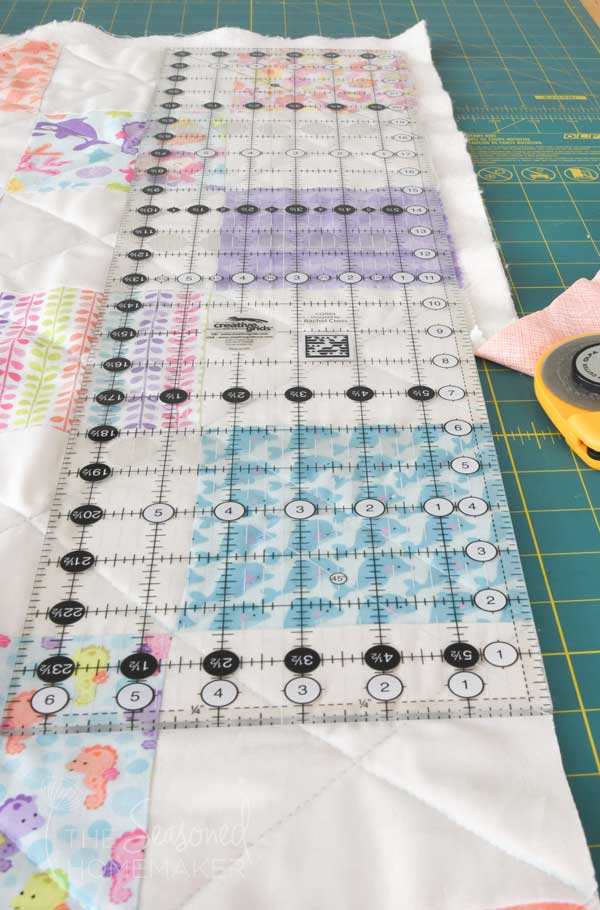
Step 10: Binding the Quilt
Making Straight Edge Binding
- Audition fabric for the binding by laying it beneath the quilt to see what works best. Sometimes the same fabric is nice because it blends; other times you may want it contrast. For your first quilt I recommend something that blends rather than contrasts.
- Binding is cut across the width of the fabric in 2.5” strips. You will need to determine how many strips needed in order to bind the quilt.
Binding Formula
- My formula is this: The sum of all four sides of the quilt plus 12-18”. My quilt is 41.5” on each side – multiplied by four is: 166”. I’ll need to add 12-18” inches more to that amount. Adding 18” means I will need 184” of 2.5” binding strips.
- The width of your fabric should be about 44”, including the selvages. By dividing 184″ x 44″ (or the width of your fabric), I’ll need 4.25 strips.
- That means I’ll need to cut 5 strips, 2.5” wide. Note: Once you’ve finished binding your quilt, there will be some left over. Save it and make a mug rug!
Pro Tip: Pre-cut 2.5” strips are perfect for making binding. All you need are five pre-cut strips to bind this quilt!
- Trim away the bind selvages.
- With WRONG sides together, press the binding strips lengthwise. This is really helpful when you’re working with a solid fabric, but it’s also a good habit to have for future quilts.
Make the Binding
There are two ways to attach binding strips.
Option 1
- Match up the binding stips and, using a 1/4″ seam allowance, sew a straight seam. It’s very easy and works great for beginners but does create a little bulk in the binding. Note: I recommend if this is your first quilt.
Option 2
- Match the strips up RIGHT sides together so they form a right angle. Then, from corner to corner, draw a right angle using a ruler and water erasable pen. Pin to hold. Stitch across the diagonal line.
- Trim the seam allowance to 1/4″.
- Continue attaching strips until there is enough to bind your quilt.
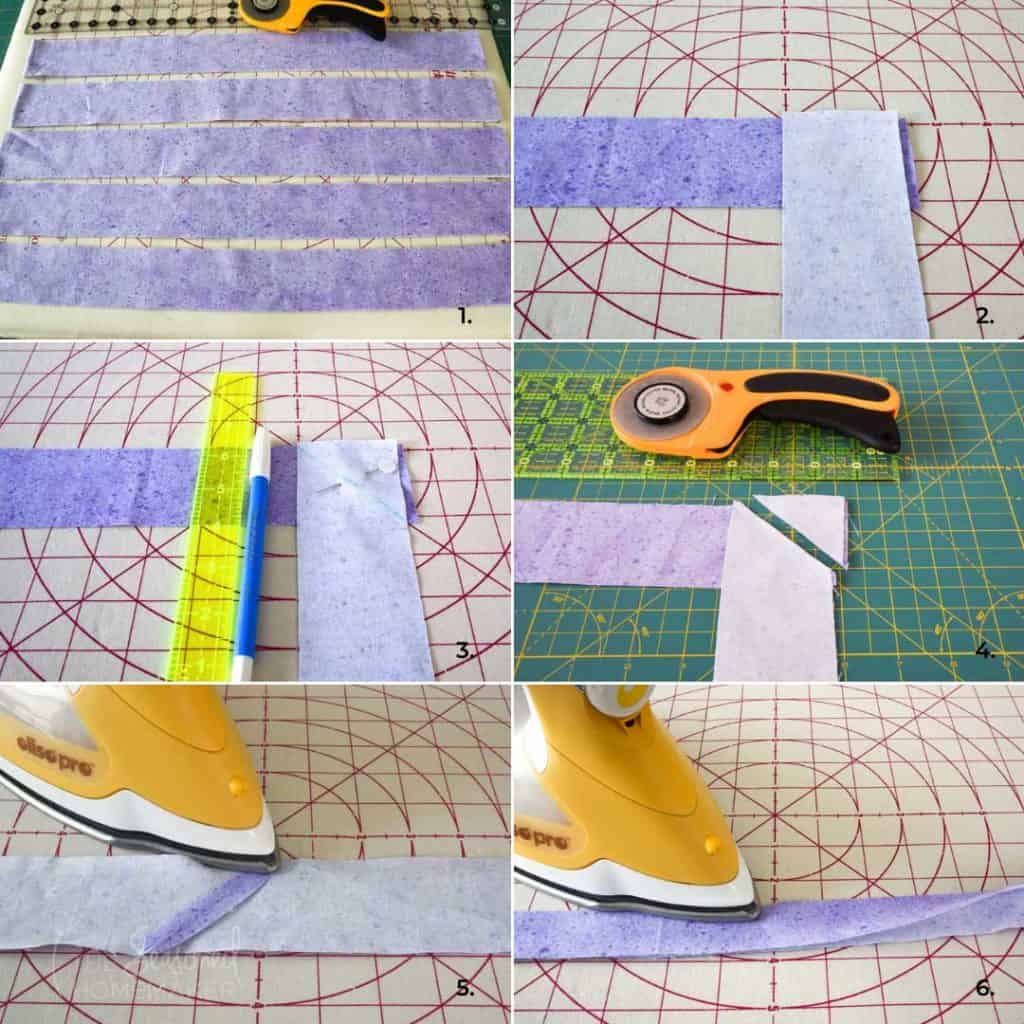
Once all the strips are attached, press the seams open. This will reduce bulk. It’s the one time on a quilt that it’s ok to press open the seams.
With WRONG sides together, press the binding strips lengthwise. When all the seams are pressed, re-press the entire binding so it is nice and flat
Machine Binding
Time for a little quilting controversy. Do you want to hand bind or machine bind your quilt?
Since this is a baby quilt, I recommend machine binding. Any quilt that gets heavy use should use machine binding.
Pro Tip: If you plan to enter a quilt in a local quilt show, it will need to be hand bound.
I have an entire tutorial on the binding process. Within the tutorial is a video and a way to download a pdf with all of the instructions.
Since binding has some very specific details, you will want to pay close attention to the details in the tutorial. You’ll learn how to get perfect corners and a way to hide the final seam that connects the binding.
Click the button below to learn how to bind your quilt.
Voila! You now have completed a baby quilt AND learned everything you need to know to move forward on your quilting journey.
>>> Want a printable version of the post? Click the pink button, and download the Printable PDF instructions.

I recommend you begin to grow your quilting skills by making a few blocks. These blocks are designed to teach you how to teach you different techniques and improve your quilting skills.



